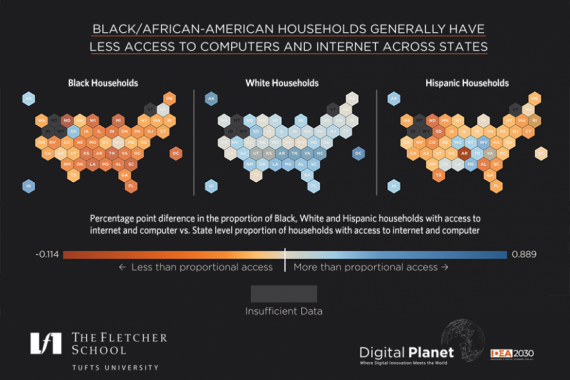Digital Injustice: New research from Fletcher’s Digital Planet team explores the racial disparities in digital access across the U.S.
Monday, June, 29th, 2020 Community Voices News

The COVID-19 pandemic has laid bare longstanding and systemic issues of inequality in the United States. Certain marginalized races and ethnicities (Black or African American and Hispanic or Latinx households) are over-represented in less-flexible, low-tech, and “high-touch” occupations and under-represented in the information economy and “high-tech” occupations; an outcome of decades of disparity in access to critical digital services like stable and affordable internet and computers.
Unemployment rates by race and ethnicity in May 2020: Job losses deepening for Black and Latinx workers
The COVID-19 pandemic has impacted three groups of people in vastly different ways: the unemployed, who are out of work and unable to earn a wage; frontline and essential workers, who are at higher risk of exposure to the virus; and workers with flexible and digitized jobs that allow them to work from the safety of their homes. Black or African American and Hispanic or Latinx workers are over-represented in the first and second categories and significantly underrepresented in the third category.
Even though the national unemployment rate fell from 14.7% in April 2020 to 13.3% in May 2020 (with a drop in the unemployment rate for white workers from 14.2 % to 12.4%), unemployment for African American and Asian workers increased slightly from 16.7% to 16.8% and 14.5% to 15%, respectively. And while unemployment for Hispanic workers decreased from 18.9% to 17.6%, they comprised the highest proportion of the unemployed.
A post-pandemic recovery for communities living on the margins will be longer and more arduous––these communities were already economically fragile and have continued to be disproportionately impacted by and exposed to the virus (in April 2020, 30% of COVID-19 patients had been African American, even though African Americans comprise only 13% of the total population in the US).